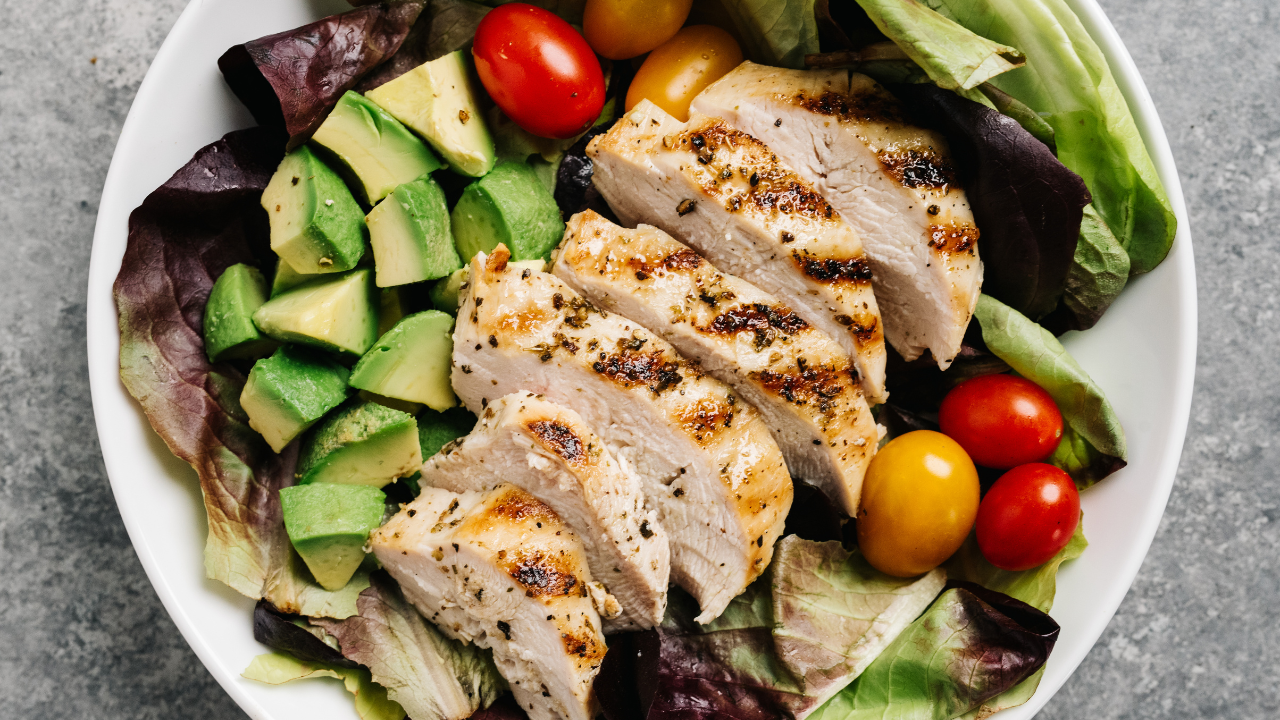Dietitian’s Thoughts on If It Fits Your Macros (IIFYM)
The idea behind IIFYM (If It Fits Your Macros) is that you can eat whatever your heart desires as long as it “fits your macros”. I mean, it sounds pretty appealing, right? But what’s more important - food quantity or food quality?
If you’re new here, hello and welcome! My name is Hannah and I am a non-diet dietitian here to help you improve your relationship with your food and finally find food freedom.
In this blog we will cover:
What are macros?
What is IIFYM?
Pros of IIFYM
Cons of IIFYM
What are macros?
Macros, short for macronutrients, are the nutrients that give our body energy by providing calories. Macronutrients include carbohydrates, protein, and dietary fat and they are all needed by the body in some capacity. Alcohol is sometimes considered the fourth macronutrient as it does provide calories, but alcohol is not a required nutrient that our body needs to survive.
In general, the amount of each macronutrient that we need can be estimated by the Acceptable Macronutrient Distribution Ranges (AMDRs), which are as follows:
Carbohydrates: 45-60% of total calories
Protein: 10-35% of total calories
Fats: 20-35% of total calories
The amount of each macronutrient that each individual needs varies based on many different factors, including age, sex, physical activity, and body weight. A registered dietitian can help you to determine what your calorie and macronutrient needs are.
Each macronutrient also provides a specific number of calories.
Carbohydrates provide 4 calories per gram.
Proteins provide 4 calories per gram.
Fats provide 9 calories per gram.
Alcohol provides 7 calories per gram, but remember that alcohol is not one of the macronutrients needed for survival.
Just remember: Carbohydrates + Protein + Fats = Total Calories
What is IIFYM?
IIFYM (If It Fits Your Macros) is a dieting technique in which you track the macronutrients (protein, carbs, and fat) that you eat. It is also commonly referred to as “flexible dieting” or “macro counting”.
IIFYM is typically used to facilitate weight loss or alter body composition in some way (to optimize nutrition for muscle gain or fat loss, for example).
Pros of IIFYM
One of the positives of IIFYM is that it tends to be less restrictive than many alternative weight loss approaches. Diets such as keto, Whole30, and juice cleanses are very restrictive and have specific food rules that need to be followed. With IIFYM, the only catch is that whatever you eat needs to meet your macronutrient goals. Wanna eat pizza? Oreos? Fried chicken? Those are all approved as long as they fit your macros. I also like that no macronutrient is left behind unlike in the keto diet (we love carbs around here).
Depending on who you get your macro goals from (hopefully a dietitian!), IIFYM does often advocate for eating enough instead of eating as little as possible, which I can of course get behind. The premise is not to eat as little as possible for fat loss, it is just to eat in a slight caloric deficit. On the IIFYM site they say, “Regardless if you like to eat pizza or boiled chicken breasts, IIFYM teaches us that if you eat fewer calories than your body requires (while getting adequate protein, carbs, fat and fiber based on your goals and the energy needs of your body) you will lose weight at a steady and predictable rate.”
Hey, I have definitely seen far worse.
Cons of IIFYM
While I do enjoy a flexible approach, IIFYM is still a diet at its core. There are a few issues that I have seen with this technique.
Quantity over quality
The “quantity over quality” nature of IIFYM does not really paint the full picture of what foods can do for us. It just simplifies our food choices down to numbers. And food is so much more than just calories or grams of protein. Food is cultural, emotional, political.
I 100% agree that all foods fit. But the difference is that I believe there should not be any stipulations to this. All foods fit. Period. Not “all foods fit as long as they fit your macros”. See the difference?
Even though IIFYM makes it seem like there aren’t any food rules, there definitely are. And this may lead to you questioning your food choice rather than tuning into your body’s hunger and fullness cues.
Lots and lots of math
Counting macros requires an understanding of what macronutrients are, how many calories they provide, and you need to know how the foods you are eating stack up. Manipulating your food choices so that they fit your macros can lead to “decision fatigue” and some people may become overwhelmed by all of the number and calculations that come along with IIFYM.
Also, your body is not a math equation. Even if you calculate your macro needs “perfectly”, you do not truly know how many calories or macronutrients your body needs on a given day. And that’s okay! You do not need to know that information if you trust your body enough to tell you what it wants and needs.
Nutrition labels can be inaccurate
@dietitianhannah Daily reminder that your body is super smart and capable of handling food #intuitiveeating #weightneutral #bodyneutrality #dietitianhannah #dietitiansoftiktok #gentlenutrition #weightloss #foodfreedom #antidietdietitian #nondietdietitian #ditchthediet #dietculture ♬ original sound - Dietitian Hannah
Did you know that certain nutrients on nutrition facts labels are allowed to be rounded up or down based on rules set by the FDA? This means that the numbers on a nutrition facts label are not 100% indicative of what you are actually eating. Once again, that’s okay! There is likely no benefit to knowing how much of each nutrient you are eating down to the microgram.
Similarly, the way that your body utilizes the nutrients in food is unique to you and your microbiome. The way that your body and my body choose to digest and absorb a cheeseburger will look different from each other. This all also depends on what other foods you are eating, as some nutrients actually compete for absorption. There are also certain nutrients that your body can only digest so much of at a certain time.
In other words, it’s all just a rough estimate. And that will hopefully make you feel like you can let off the reigns a little bit.
May impact your relationship with food
Speaking of math and numbers, what happens when you finish your macros for the day and you are still hungry? Do you just have to ignore those hunger cues and wait until tomorrow when the numbers reset? This is a very possible scenario and one of the big reasons why I don’t encourage IIFYM or calorie counting for most people, at least not long term. Ignoring and suppressing our hunger cues is surefire way to send our relationship with food into a decline.
Our calorie and macronutrient needs vary from day to day and I don’t think anyone has time to have their metabolic rate tested in a lab each day. If used at all, IIFYM and calorie counting should only be incorporated as a short term learning tool, not a lifeline that you depend on.
Restriction in any form (physical or mental) can also lead to overeating or binge eating. While IIFYM is much less restrictive than many of the diets out there, it still sets boundaries around how much you are allowed to eat, which may be trigger for some people.
Bottom line
IIFYM may not be a good approach for the intuitive eater or those looking to improve their relationship with food. Counting calories or macros can take away from listening to your internal hunger and fullness cues. If you do wish to track your macros or calories, I recommend working with a dietitian as able to ensure that you are meeting your nutrient needs.
Have you tried IIFYM? Leave a comment below with your thoughts!
Learn more
You may also enjoy this video:
Want more help on your intuitive eating journey?
Join my membership to become part of a community of ex-dieters working towards food freedom and making peace with food so they no longer need to cut out their favorite foods.
































